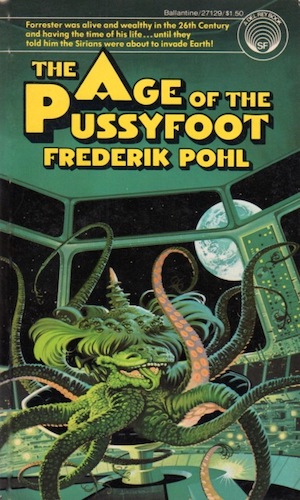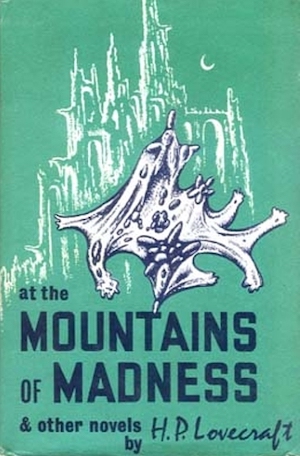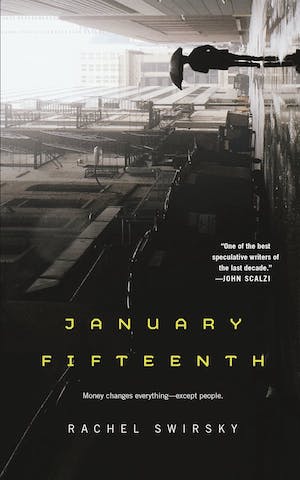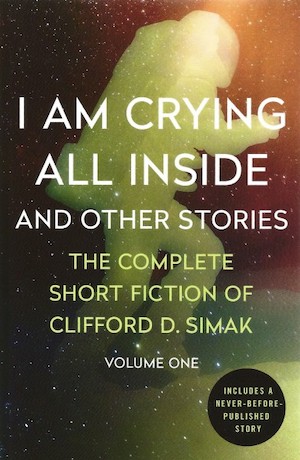Headlines are filled with the exploits of billionaires attempting to create in reality the Torment Vortices about which they read in such works as Don’t Create the Torment Nexus (popularized by @AlexBlechman). Who among us has not dreamed of screaming eternally in a Torment Nexus? Nevertheless, there may be drawbacks to Torment Nexuses.
Being the boundless font of positivity that I am, I prefer not to focus on the negative aspects of our current circumstances. Instead, perhaps we could refocus billionaires’ efforts on science fictional goals every bit as shiny as Torment Nexuses!
Here are five science fictional ideas I’d love to see made real, arranged in order of decreasing possibility.
The Joymaker from Frederik Pohl’s The Age of the Pussyfoot

Joymakers are amongst the most prominent features of the year 2527, in which Charles Dalgleish Forrester finds himself revived. Joymakers combine “telephone, credit card, alarm clock, pocket bar, reference library, and full-time secretary,” as well as other functions, in an affordable, compact package. Virtually every 26th century person carries and relies on their joymaker.
Readers may notice that joymakers sound a lot like smartphones, pocket bars aside. This is because they are essentially smartphones. In his 1968 afterword, Pohl speculates that it probably won’t take five centuries for bulky 1960s computers to become multifunction conveniences one could fit into a pocket. He guessed it might take fifty years. If one counts the IBM Simon as a smartphone, it took about twenty-five years.
I include joymakers as a proof of concept: it is possible for SF predictions to become physical reality, sometimes sooner than one might expect.
Extreme paleo-archaeology, as exemplified in H.P. Lovecraft’s 1931 At the Mountains of Madness

There is no compelling reason to think there were technological cultures prior to humans. However, absence of evidence does not mean evidence of absence. Who knows what dread interesting secrets are hidden in Earth’s past… or if we could survive discovering them? Let’s find out!
Even if the Silurian hypothesis is wrong, and there were no previous civilizations—or if there were, none of them involve sanity-rending revelations that leave us with underpants on our heads, muttering “wibble, wibble”—what we do discover is certain to be fascinating.1
Universal Basic Income, as exemplified in Rachel Swirsky’s January Fifteenth

There have been a number of UBI experimental projects carried out of late, in nations from Canada to Finland to Kenya. The results: providing people with a minimum assured income reduces the effects of homelessness and health problems and increases investments in education and entrepreneurship. Since this runs contrary to the accepted wisdom that only anxiety and the possibility of a lingering death by malnutrition can sufficiently motivate proles, no nation ever actually implements UBI, preferring to run test program after test program until they get the answers they want.
Some might ask how UBI benefits the 1%. For one thing, the people at the bottom of the social pyramid are likely to spend their UBI; the money will soon find its way into the accounts of the wealthy. Also, people confident they can buy food and pay rent will finally have the time to properly appreciate the far grander crises bearing down on us, from climate change to nuclear war.2
Symbiotes, as imagined in Clifford Simak’s “Ogre”

(Collected in I Am Crying All Inside and Other Stories, 2015)
Ogre’s alien lifecloaks enjoy a commensal relationship with humans, trading food, warmth, and health in exchange for access to higher cognitive functions. The result from the human perspective is transformation into a form suited to a far broader range of environments than Mark 1 humans (that is, without advanced technology like spacesuits).
As it happens, humans already enjoy intimate mutually beneficial relationships with other species, such as the gut bacteria. Some estimates put the fraction of the human body that is non-human microbiome at around sixty percent. Add-ons analogous to Cloaks would only be a continuation of a process already in progress.
Superluminal communication, as exemplified by Ursula K. Le Guin’s The Dispossessed

To be a total buzzkill, all evidence to date suggests that the speed of light is a hard limit on how quickly information can travel. None of the suggested work-arounds appear to be realizable in this universe. Whereas most of my favored torment nexuses need only overcome intractable social or technological barriers, a device that allows instant communication over vast distances appears to be precluded by natural law.
Still, consider how useful it would be to have real-time control of distant space probes… As well, superluminal communication would facilitate intra-temporal communication: the same device that allows one to send commands to Voyager without time lags would also allow one to send messages to the past, which could only result in great hilarity. Who among us has not wanted to mail forged invitations in the name of various 19th-century luminaries, inviting Hans Christian Andersen for lengthy visits?
Those are my five preferred torment nexuses (or perhaps, worthy alternatives to inventing the torment nexus). Which SFnal development would you like to see made reality?










